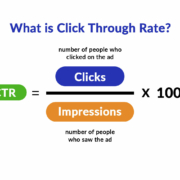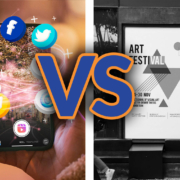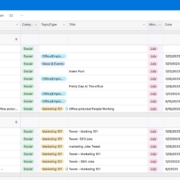Don’t Just Wing It: Have a Social Media Marketing Plan
Let’s cut to the chase. If you’re asking, “Do I need a social media marketing plan?” You probably do. Social media marketing efforts are a type of content marketing campaign that helps you create high-quality content that your target audience wants to see — on the social media platforms they’re already on.
Learn some of the basics of social media marketing planning, including how to identify your target audience and monitor if your plan is working. So if you want to develop your social media marketing strategy, keep reading!
What’s Social Media Marketing?
You’re probably starting your social media marketing plan from scratch. First things first, what is social media marketing? It’s a type of digital marketing using social media apps. Through social media, brands can directly communicate with their audience.
Social media marketing starts with identifying your target audience. You’ll need to know the demographics of your ideal customers and their social media habits to create content that will resonate with them. What age bracket are you targeting? Where does your target audience live and work? What do they do for fun?
Target audiences are determined through buyer personas (a description of people who represent your target audience). You create this persona when you’re researching your target audience.
Looking at Social Media Profiles
When identifying social media profiles to make, think about which platforms are best for your business goals and target audience. Consider your goal for each social media marketing channel, where your target audience already is, and why they’re on that platform. For example, a small business wanting to increase brand awareness might head to LinkedIn or TikTok, but these social media accounts see very different audiences with different goals. LinkedIn is primarily for professionals looking for education or content related to their careers. TikTok is full of younger people strictly looking for entertainment.
Consider the structure of each platform before you head to the apps. High-quality content that performs well on Instagram may fail as a tweet.
What are some different social media channels? Here’s a crash course:
-
- LinkedIn: Largest professional social network.
- Facebook: Networking site that allows users to share thoughts, videos, music, and links.
- TikTok: Users create and share short videos.
- Snapchat: Short videos, text messages, and pictures are shared.
- Instagram: A video and photo-sharing app.
- Twitter: Microblogging site which uses photos, videos, and links.
Once you have a social media presence established on the appropriate channels, it’s time to start optimizing the content. This includes using hashtags, creating templates and social media content calendars, and automating social media posts.
As you build your content calendar, you’ll want a mix of original content and relevant retweets and reposts, which you curate. Regardless of the type of content (memes, infographics, etc.), the calendar should be a reference you can look back on to see what worked in the past and what is planned for the future. Include posts for all of your social media accounts so you can keep track of everything from one place.
Audit Your Socials
Once you start posting to social media platforms, it makes sense that you’ll want to see if your plan is actually working. Social media audits determine what social media channels your company should be using, and how they can optimize the use of social media. They also help you decide what kind of content you need to create for each channel to ensure that it is relevant, timely, and consistent with your brand. There are many different social media metrics that you can use to effectively audit your social media platforms, including follower count, impressions, click-through rate, and shares.
Build Your Presence
As you find your footing with social media networks, get creative with ways to expand your brand’s social reach. Influencer marketing is a great way to do that. Collaborating with an influencer introduces your brand to their following, who trusts them.
Also look into user-generated content (UGC), which is exactly what it sounds like: content produced by the general public who use the product or service. Have you ever taken a picture of something you bought that you absolutely love and raved about it on social media? That’s UGC.
Both influencer marketing and user-generated content use high-quality content to drive traffic to your site.
Listen to What Social is Telling You
Next, set up social listening tools, a.k.a. software that monitors mentions about your company, competitors, and anything related to your brand.
Social listening is essential to understanding your audience and how they interact with your brand or products. It helps you see what content they’re interested in, what content they’re sharing, and what topics are relevant to them. You find the positive and negative, meaning if customers need a solution, you can see that and offer assistance.
Your audience on TikTok will use the social platform differently than your followers on LinkedIn or Snapchat. And the conversations might be completely different, too. Social listening will help you determine all of that.
Measure if Your Plan is Working
To measure the success of your social media marketing strategy, you’ll need to track various metrics such as engagement rate, social presence, lead generation, website traffic, and social media campaigns. Setting key performance indicators (KPIs) for each social media channel can help you understand which channels are working and when it might be time to adjust your strategy.
Just a handful of KPIs you’ll want to track include:
-
- Shares
- Clicks
- Impressions
- Reach
- Mentions
- Conversions
Create a brand voice and content strategy that will keep your social media presence consistent across all social media networks. By doing that, your social media analytics will be consistent, too.
Monitor KPIs
There are software programs like Sprout Social and Google Analytics, also known as social media management tools. They help manage KPIs and they can automate posts.
A consistent posting schedule is important to keep you organized and competitive.
Let Lift Marketing Guide Your Social Plan
Setting social media marketing goals can seem intimidating at first, but with the right social media marketing plan — and a bit of trial and error — your business will be able to make social media work for you, step-by-step. So don’t wait any longer, contact Lift Marketing to start planning your social media content and campaigns today! With the right approach to a social strategy, our marketing team will help you achieve an optimized social media presence that drives engagement and leads to increased brand awareness.











